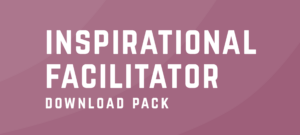How multiplying your communication channels will get you the results you need

When we are not face-to-face with each other in real rooms, we can lose people’s attention very easily. Participants drift away mentally – and who knows what happens when the camera is turned off?
So the quality of input drops and the work suffers. Yet there are really simple ways to engage and sustain people’s attention on a topic, by developing multiple communication channels.
I’ve recently been involved in a series of online meetings, firstly with three to six colleagues, then bringing in six to eight clients. It’s fair to say that everyone’s levels of interest have fluctuated depending on their various reasons for being there.
I tend to switch off during the administrative and logistical details, perking up again when we are being creative or when it’s my turn to facilitate the discussion. Others have their own preferences.
But by keeping multiple communication channels open, we’ve succeeded in getting high-quality contributions when we need them and have sustained and grown the project over several months.
Opening multiple communication channels
-
The simplest solution is usually the platform’s chat function, a Google doc or a similar shared space to supplement the conversation during the calls. Immediately anyone who isn’t talking has a second strand of communication available, which is great as some people prefer to talk and others to write.
-
Your shared document allows participants to write simultaneously, or to bide their time and offer more developed thoughts a bit later.
-
-
Our group is using the Miro app, which is a shared giant whiteboard, allowing us also to draw and shuffle virtual post-it notes. It’s not like an old-fashioned meeting in which one secretary administrator takes the minutes. Here we are co-creating the material that will survive the meeting. You can do this with names or anonymously.
-
With a little preparation, you can set up sections to visit in turn, either together or encourage small groups to rotate through the topics, building on what was left by the previous set of note-makers.
-
Our Miro record does get a bit messy as we do all of the above: immediate comments, more notes added later and tidied new drafts for presenting at the next meeting.
-
-
Offering time flexibility is a real win-win. For immediacy, I usually invite colleagues to join in as we go along by writing comments or questions in the chat box, reserving the shared doc for a more permanent record.
-
In a conference with dozens or hundreds of contributors, it’s handy to have someone monitor the chat box, routing questions and comments to the facilitator or speaker, thus allowing the featured speakers to improvise or to structure a question and answer session.
You may have other document-recording apps you like to use but it’s having MULTIPLE channels of communication for participants that’s the key – to maintaining attention and capturing contributions.
It can feel like losing control …because you won’t always see everything that’s going on
I know one facilitation company who deliberately blocked all participant to participant chat during their meetings, based on their concern that people wouldn’t focus on the featured speaker.
According to the participants I spoke to, cutting the personal channel felt controlling and indicated a lack of trust. Of course they quickly found ways around it with messenger services, incidentally creating an us-and-them rebellion, which completely countered the intention of the organisers.
My view is that if people want to talk to each other one-to-one, that’s great. Whether they are letting off steam or testing a nascent idea before offering it to the larger group, it’s an advantage of virtual set-ups that side conversations can happen simultaneously without disturbing the whole team. In school classrooms it’s more the distraction of note-passing that’s the problem, than any inherent ‘naughtiness’ of people wanting to communicate with each other.
It’s true you now may not see or hear everything, but this feeling of loss of control is more than compensated for by the increased richness of communications.
By opening up multiple channels, we are encouraging participation, engagement and it’s our best bet for including as many people as possible in the ways they prefer to work – which also promotes good will.
Let’s treat people as competent to manage their own focus, trusting them to contribute as fully as possible, by giving them the range of communication channels to allow them to do so in the ways that best suit them.
How effectively are you communicating in your meetings?
What communication channels are you using and are they getting you the results you want to see?
If you’re hosting meetings or training sessions and struggling to get quality contributions and output from your group then sign up to the waiting list of our popular and be first on the priority booking list The Inspirational Facilitator.
Get free tips on how to develop confidence and creativity straight into your inbox.
Company Number 09564618. VAT Number GB 213 37981.
Registered Address 10 Greville House, Lower Road, Harrow on the Hill, Middlesex, HA2 0HB.
Postal Address 34a Clarence Road, St Albans, Hertfordshire, AL1 4NG
Telephone 01727 843 820
Mobile 07973 953 586



![DJI Systems - web design | marketing | admin systems | consulting - [ anglesey / wales ] DJI Systems - web design | marketing | admin systems | consulting - [ anglesey / wales ]](https://djisystems.com/banners/DJI_WebBanner_lt.png)
